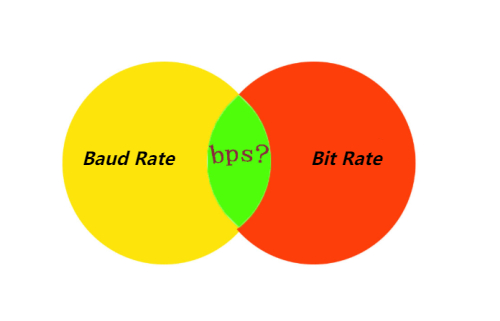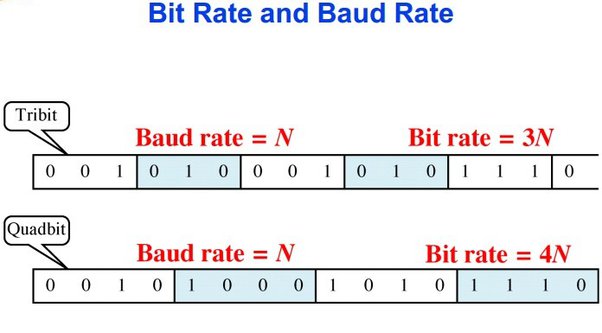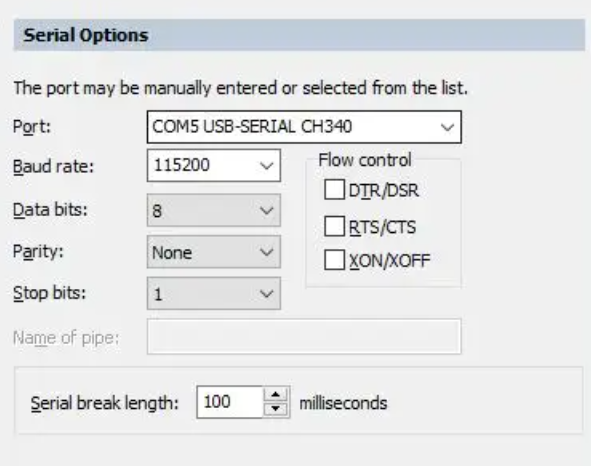What is the Difference Between Baud Rate and Bit Rate
What is Bit Rate?
Bit rate as signaling rate and information transmission rate (referred to as information rate, information rate). Its definition is: the amount of information transmitted per unit time (per second) of the communication line (or system), that is, the number of binary digits that can be transmitted per second, usually expressed in Rb, and its unit is bits per second (bit/s or b/ s, the abbreviation is bps).

In a binary system, the information rate (bit rate) is equal to the signal rate (baud rate), for example, when the system transmits at 50 binary symbols per second, the information rate is 50bit/s, and the signal rate is also 50Bd (baud rate). In the case of no modulation, the bit rate is equal to the baud rate; with phase modulation, the bit rate is not equal to the baud rate. The sending device and the receiving device of the communication system must work under the same baud rate, otherwise there will be frame synchronization errors.
What is Baud Rate?
Baud rate as code transmission rate, symbol transmission rate (referred to as symbol rate), signal transmission rate (referred to as signaling rate) or modulation rate. Its definition is: the number of symbols (pulses) transmitted per unit time (per second) of the communication line (or system); or the number of transformations of the modulated signal waveform per unit time during the signal modulation process, usually expressed in RB, the unit is baud (Bd or Baud, the former specification). If 1 symbol is transmitted per second, it is called 1Bd; if the duration of 1 symbol is 200ms, then 5 symbols can be transmitted per second, then the symbol rate (baud rate) is 5Bd.
The baud rate (symbol rate) does not limit what kind of code unit it is, so when the baud rate is given, the system of this code unit must be specified. For M-ary symbols, the relationship between the bit rate (information rate) Rb and the baud rate (symbol rate) RB is:
Rb=RB·lbM
In the formula: lbM=log2M, which means the logarithm of M with base 2. Obviously, for binary symbols, since lb2=1, Rb=RB, that is, the baud rate and the bit rate are numerically equal, but the units are different, that is, the meanings of the two are different.
The difference between bit rate and baud rate
Many people have not understood the difference between bit rate and baud rate:
Bit Rate
Bit (bit), 1 byte (Byte) is equal to 8 bits (bit). Bit rate is the number of bits transmitted per second.
Baud rate
In the field of electronic communication, Baud is the modulation rate, which refers to the rate at which the effective data signal modulates the carrier, that is, the number of times the carrier modulation state changes per unit time. It is a measure of the symbol transmission rate, 1 baud refers to the transmission of 1 symbol per second, and through different modulation methods, multiple bits of information can be loaded on one symbol.
Similar to bit rate, you only need to understand the "baud" (ie symbol symbol) in baud rate as a transmission unit.
The relationship between baud rate and bit rate
Bit rate = baud rate x number of bits corresponding to a single modulation state.
1 Baud = log2M (bit/s)
where M is the number of coding levels of the signal.
It can be concluded that the bit rate of two-phase modulation (a single modulation state corresponds to 1 binary bit) is equal to the baud rate; the bit rate of four-phase modulation (a single modulation state corresponds to 2 binary bits) is twice the baud rate; eight the bit rate for phase modulation (3 binary bits for a single modulation state) is three times the baud rate; and so on.

Example description
1. Serial port 9600 baud rate
The serial transmission rate is 9600bps, how many bytes can be transmitted per second?
start bit: 1
Data bits: 8
stop bit: 1
Check Digit: 0
To transmit 1 byte of data, 10 bits need to be transmitted, so:
9600 ÷ 10 =?960Byte
That is, a (regular) serial port at 9600 baud transmits 960 bytes per second.
2. I2C communication speed 100KHz
What does I2C communication speed 100KHz mean?
I2C belongs to synchronous communication and has a clock line (SCL). Generally, 100KHz refers to the frequency of this clock line.
Tip: Here I2C 100KHz represents the communication speed, and the serial port baud rate 9600 also represents the communication speed, but the expression is different.
3. SPI communication rate 150Mbps
What does SPI data transfer rate up to 150Mbps mean?
There are many ways to express the communication speed, or the communication rate. Here, the 150Mbps of the SPI is different from the 9600bps of the serial port, because the transmission format is different.

